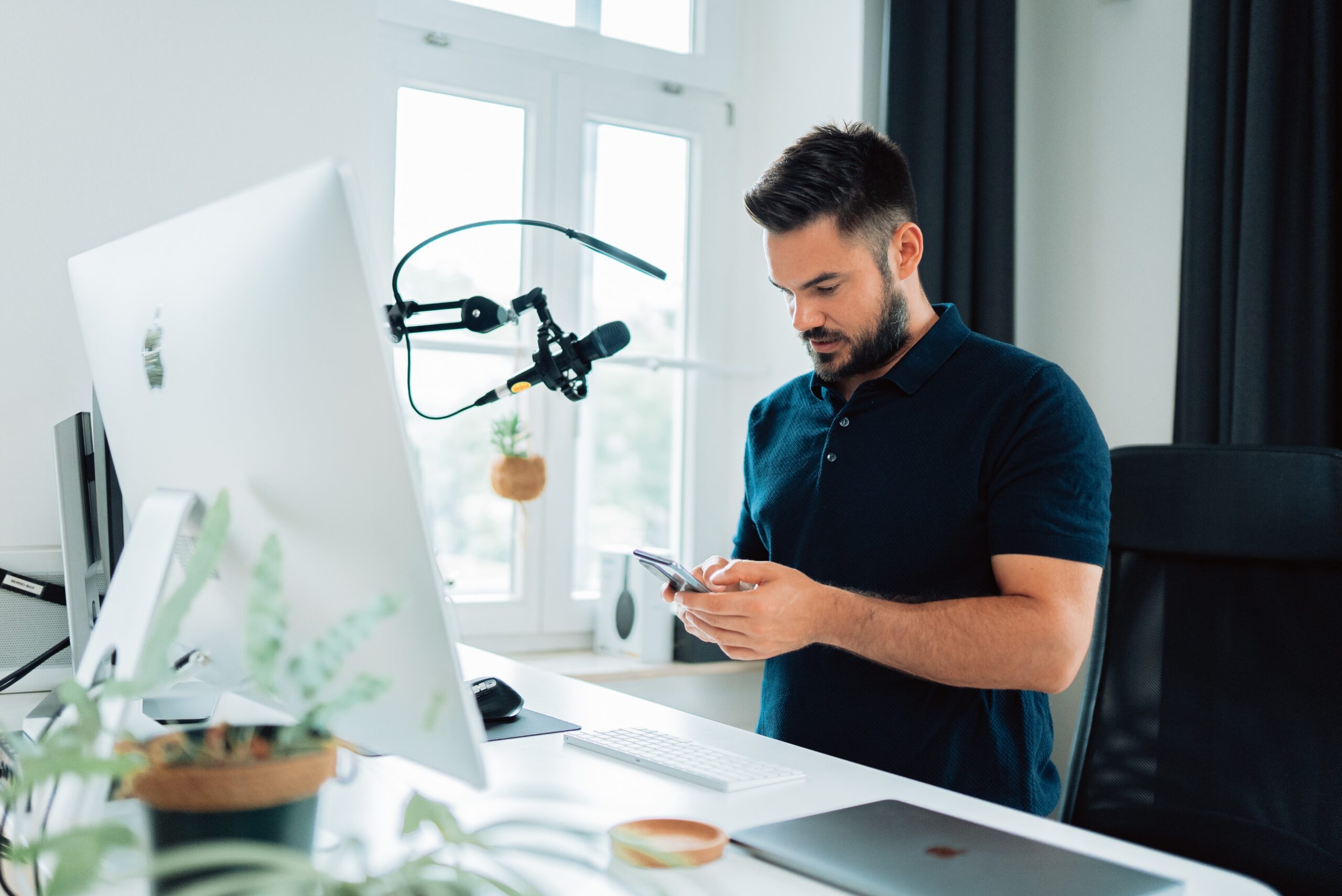The digital age has given birth to a new type of celebrity: the influencer. No longer confined to movie stars or high-profile athletes, today’s influencers can emerge from virtually anywhere, as long as they connect authentically with a dedicated audience. At the heart of this evolution is the power of online platforms, from blogs to Instagram, TikTok and YouTube. These spaces have democratised fame, giving anyone with a smartphone and a story to share the potential to amass followers.
What drives the allure of becoming an influencer? Well, there’s the perceived glamour. Regularly, our feeds are flooded with influencers enjoying exotic trips, wearing the latest fashion, or even simply savouring a meal—all seemingly on the brand’s dime. Such visuals paint a life of luxury and excitement, making the profession seem enticing.
Beyond the material perks, the role of an influencer offers a unique blend of personal branding and entrepreneurship. It promises the freedom to carve out a niche based on personal passions, be it in travel, fashion, wellness, or any other domain. For many, the thought of turning hobbies into a source of income, all while living by their own rules, is undeniably attractive.
However, as the saying goes, not everything that glitters is gold. While the highlight reels on social media platforms can be captivating, there’s a lot more to influencer life than meets the eye. And in the context of personal branding, the decision to become an influencer carries significant weight.
Branding Power of Influencers
Brands recognise the value of authentic voices to communicate their messages. This is where influencers come in. With their cultivated trust and rapport with audiences, influencers possess a unique branding power that traditional advertising often lacks.
Firstly, influencers often come with a ready audience. This isn’t just about numbers, but the quality of engagement. Followers choose to connect with influencers because they resonate with their content, values, or personality. Consequently, any brand association or endorsement made by an influencer carries a level of inherent trust. For instance, when an influencer vouches for a skincare product’s efficacy, it’s seen as a genuine recommendation rather than a straightforward advertisement.

Moreover, influencers have the ability to create tailored content that seamlessly integrates a brand’s message. Unlike standard ads that can sometimes feel intrusive or out of place, influencer collaborations can weave promotional content into their regular narrative. This makes for more organic and relatable promotions. For example, a travel influencer might showcase a hotel stay as part of their journey, making the promotion feel like a natural part of their storytelling.
On the other hand, influencers also benefit from these brand collaborations. It’s not just about monetary gains or freebies. Collaborating with brands can boost an influencer’s credibility, especially when those brands are well-respected in the industry. It signals to followers that the influencer is recognised and valued, further solidifying their position in the niche they occupy.
In addition, brands often provide influencers with exclusive access to products, events, or experiences, allowing influencers to offer fresh, first-hand content to their audience. This not only keeps the content exciting but also positions the influencer as a go-to source for the latest trends or news.
The Upsides of Being an Influencer
Certainly, the role of an influencer comes with a set of appealing advantages. When viewed from a branding perspective, these upsides can significantly impact both personal and professional growth.
One of the most evident benefits is the ability to monetise personal passions. For many, this is the dream: turning what you love into a livelihood. A fitness enthusiast might start by sharing workout routines and eventually land sponsorship deals with sportswear brands or health supplements. This synergy between passion and profit can lead to a fulfilling career, both emotionally and financially.
Moreover, being an influencer often offers a flexible work environment. Unlike traditional 9-to-5 jobs, influencers have the liberty to set their own schedules, choose their collaborations, and even determine their work locations. This flexibility can lead to a better work-life balance, allowing influencers to integrate their personal lives and interests into their professional narrative.
Another significant upside is the platform influencers possess. Having a voice and a dedicated audience means influencers can raise awareness on issues close to their hearts, advocate for causes, or even drive change. This extends the influencer’s impact beyond branding and into realms of social good, creating a deeper connection with followers.
In addition, as influencers grow their brand, they often get to network with industry leaders, attend exclusive events, and access opportunities that might be out of reach for many. These experiences not only enrich their content but also broaden their horizons, offering both personal and professional development.
Above all, a successful influencer often becomes a brand in themselves. This self-branding opens doors to diversified income streams, such as launching personal product lines, hosting events, or even writing books.
Challenges in Building and Maintaining a Personal Brand as an Influencer
While the advantages of being an influencer are many, the role also comes with its fair share of challenges. Navigating these can sometimes be complex, especially when it concerns one’s personal brand.
Firstly, authenticity is a major concern. With the increasing number of brand collaborations, there’s a fine line between genuine endorsements and those driven solely by financial gains. Followers value sincerity, and striking the right balance between paid partnerships and organic content is vital. For instance, promoting a product that doesn’t align with an influencer’s usual content or values can erode trust.

Moreover, the digital realm is ever-evolving. Trends change, algorithms get updated, and new platforms emerge. Keeping up with these shifts can be exhausting. What worked a year ago might not resonate today. For example, a content style popular on Instagram might not necessarily translate well to TikTok. This is why continuous learning and adaptability are essential.
Similarly, there’s the aspect of public scrutiny. Living a life in the public eye means every action, statement, or even a mere tweet can be analysed, criticised, or misinterpreted. Handling negative feedback or controversies gracefully while protecting one’s mental well-being can be taxing.
In addition, there’s the pressure of consistency. Maintaining a regular posting schedule, brainstorming fresh content ideas, and ensuring high-quality production can become overwhelming. And unlike many traditional careers, the boundary between personal life and work can become blurred, leading to potential burnout.
Furthermore, while many influencers aspire to turn their personal brand into long-term ventures, the digital space’s volatile nature means there’s no guaranteed longevity. Audience preferences change, and influencers might find their relevance waning as new faces emerge.
While the influencer path offers ample opportunities, it’s not without its challenges. Ensuring long-term success requires more than just amassing followers; it demands strategy, resilience, and a keen understanding of both self-branding and the digital landscape.
Evaluating the Long-term Implications for Your Personal Brand
Stepping into the influencer realm isn’t a decision to be taken lightly. Above all, it’s crucial to understand the long-term implications for one’s personal brand. While the immediacy of influencer benefits can be enticing, considering the broader picture is essential.
Firstly, the digital footprint is lasting. Content posted, partnerships formed, and stances taken will remain a part of the online archive. This means future employers, collaborators, or even followers can trace back to past content. So, it’s imperative to create and share content that aligns not just with current values but also with future aspirations.
Moreover, the influencer industry is saturated. While the initial journey might kick off with rapid growth, sustaining momentum and remaining relevant requires continuous effort and innovation. It’s not just about maintaining follower count but ensuring that the personal brand doesn’t stagnate. Diversification, such as exploring new content mediums or branching out into related areas, can be valuable strategies.
Financial stability must be considered, too. While brand collaborations and sponsorships can offer lucrative deals, influencer income can be unpredictable. Unlike traditional professions with steady monthly salaries, influencers might face periods of high earnings followed by dry spells. Planning for such uncertainties, be it through savings or exploring multiple revenue streams, becomes crucial.
Additionally, the personal brand’s adaptability is essential. As mentioned earlier, the digital landscape is dynamic. An influencer might need to pivot their brand, delve into new niches, or even overhaul their content strategy based on changing trends and audience preferences.
To sum up, becoming an influencer is a significant commitment, especially from a branding perspective. It offers a platform, a voice, and numerous opportunities, but it also demands responsibility, foresight, and strategic planning. For those considering this path, reflecting on both the immediate rewards and the long-term implications is key. Only then can one truly determine if becoming an influencer aligns with their personal and professional goals.




